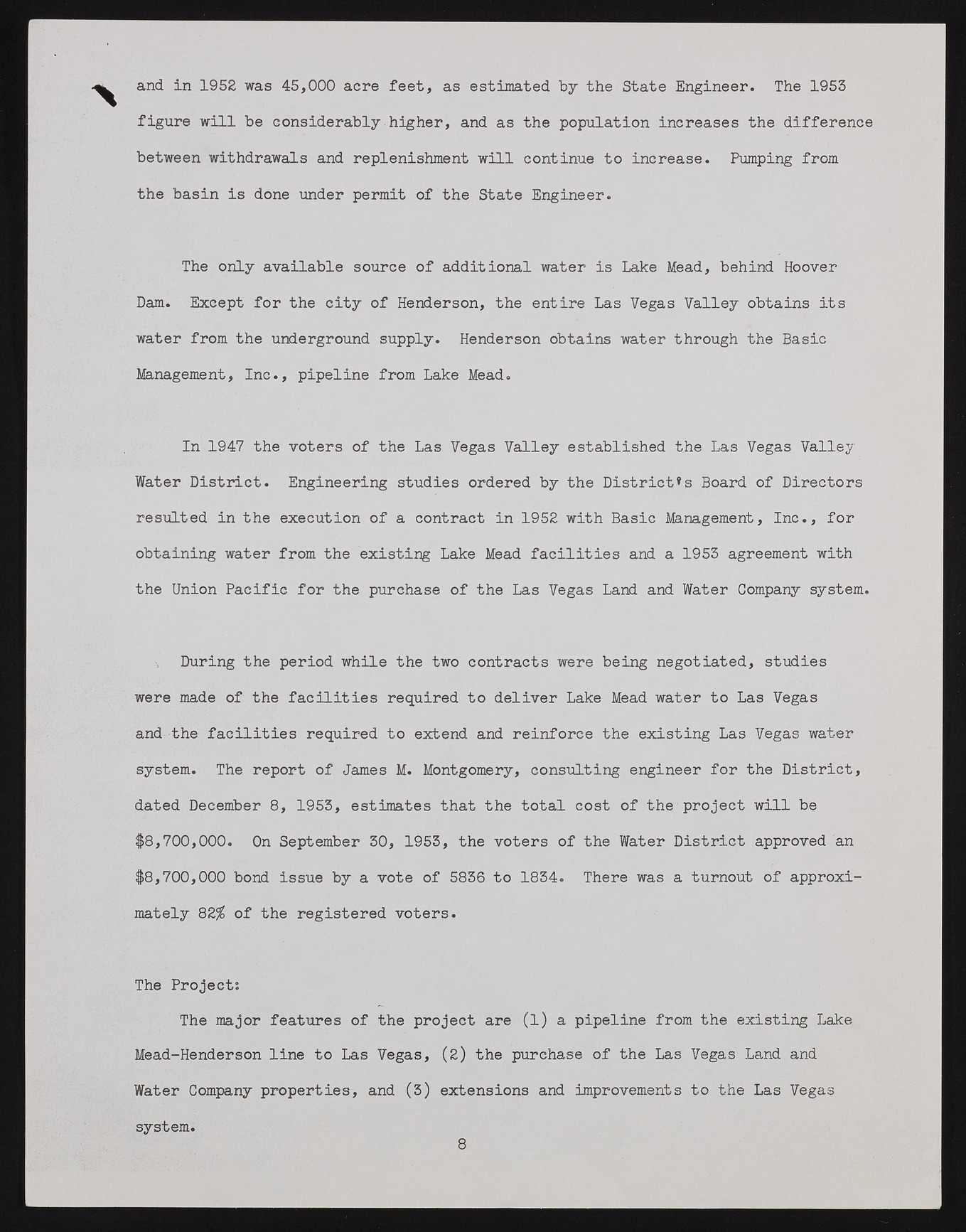Copyright & Fair-use Agreement
UNLV Special Collections provides copies of materials to facilitate private study, scholarship, or research. Material not in the public domain may be used according to fair use of copyrighted materials as defined by copyright law. Please cite us.
Please note that UNLV may not own the copyright to these materials and cannot provide permission to publish or distribute materials when UNLV is not the copyright holder. The user is solely responsible for determining the copyright status of materials and obtaining permission to use material from the copyright holder and for determining whether any permissions relating to any other rights are necessary for the intended use, and for obtaining all required permissions beyond that allowed by fair use.
Read more about our reproduction and use policy.
I agree.Information
Digital ID
Permalink
Details
More Info
Rights
Digital Provenance
Publisher
Transcription
and in 1952 was 45,000 acre feet, as estimated by the State Engineer. The 1953 figure will be considerably higher, and as the population increases the difference between withdrawals and replenishment will continue to increase. Pumping from the basin is done under permit of the State Engineer. The only available source of additional water is Lake Mead, behind Hoover Dam. Except for the city of Henderson, the entire Las Vegas Valley obtains its water from the underground supply. Henderson obtains water through the Basic Management, Inc., pipeline from Lake Mead. In 1947 the voters of the Las Vegas Valley established the Las Vegas Valley Water District. Engineering studies ordered by the District's Board of Directors resulted in the execution of a contract in 1952 with Basic Management, Inc., for obtaining water from the existing Lake Mead facilities and a 1953 agreement with the Union Pacific for the purchase of the Las Vegas Land and Water Company system. During the period while the two contracts were being negotiated, studies were made of the facilities required to deliver Lake Mead water to Las Vegas and the facilities required to extend and reinforce the existing Las Vegas water system. The report of James M. Montgomery, consulting engineer for the District, dated December 8, 1953, estimates that the total cost of the project will be $8,700,000. On September 30, 1953, the voters of the Water District approved an $8,700,000 bond issue by a vote of 5836 to 1834. There was a turnout of approximately 82$ of the registered voters. The Project: The major features of the project are (1) a pipeline from the existing Lake Mead-Henderson line to Las Vegas, (2) the purchase of the Las Vegas Land and Water Company properties, and (3) extensions and improvements to the Las Vegas system. 8

